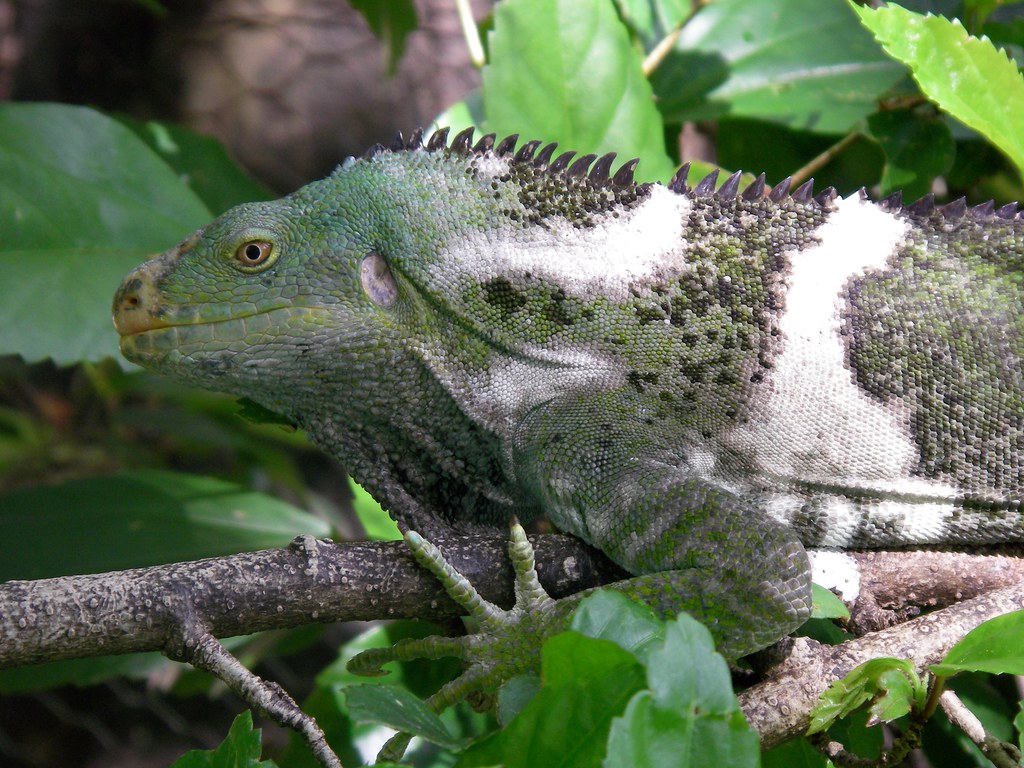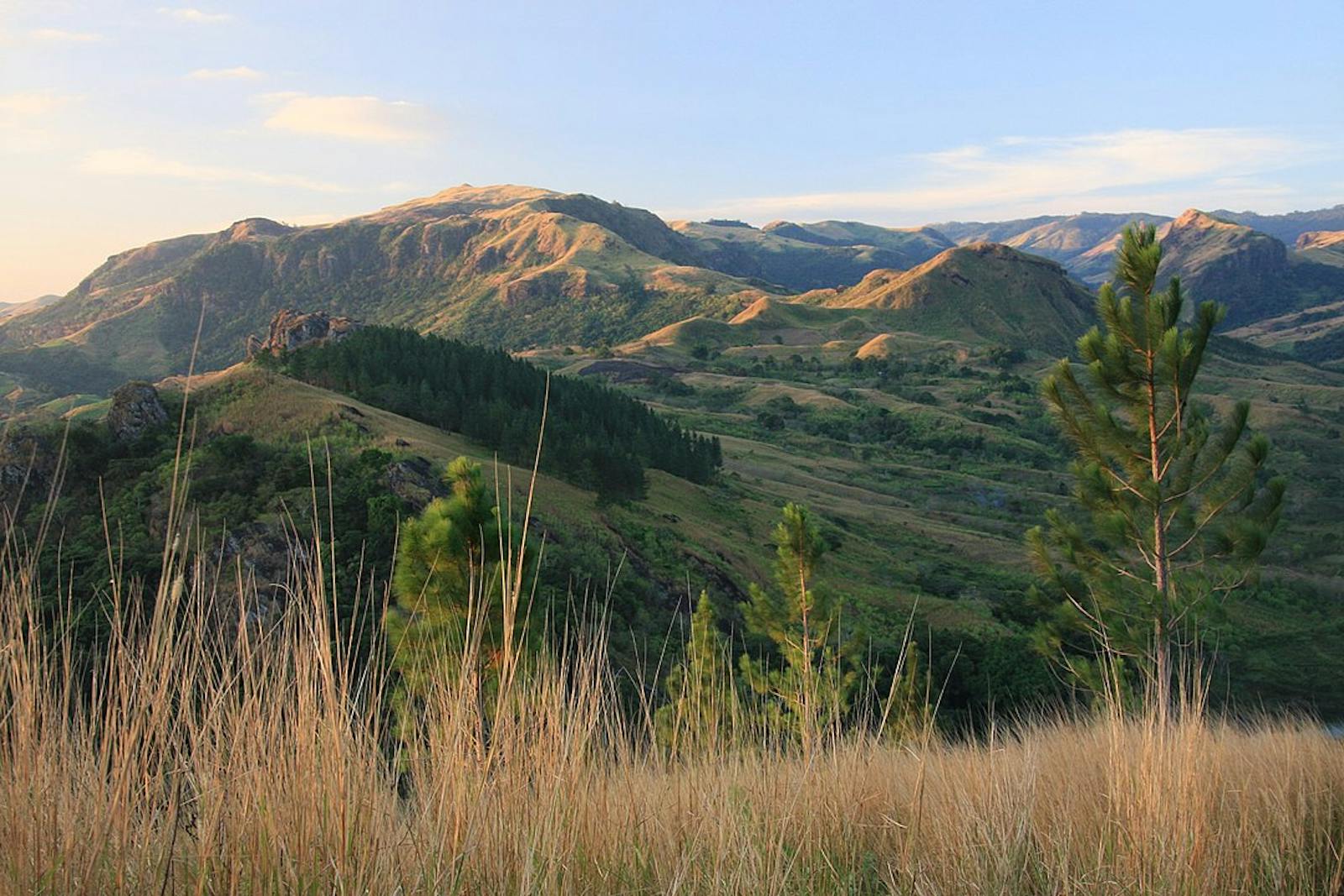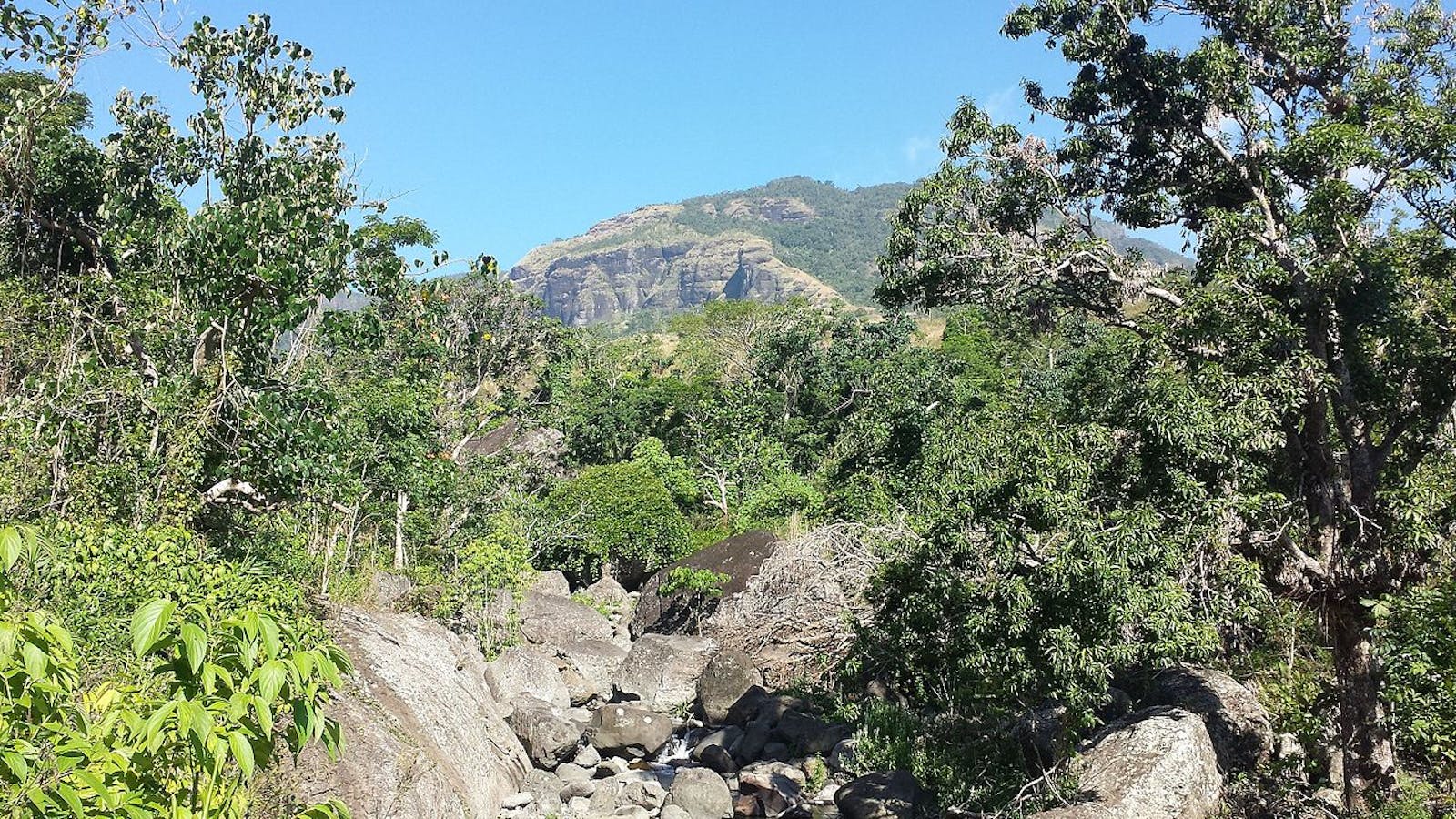Fiji Tropical Dry Forests
The ecoregion’s land area is provided in units of 1,000 hectares. The conservation target is the Global Safety Net (GSN1) area for the given ecoregion. The protection level indicates the percentage of the GSN goal that is currently protected on a scale of 0-10. N/A means data is not available at this time.
Bioregion: Fiji & Tongan Tropical Islands (OC6)
Realm: Oceania
Ecoregion Size (1000 ha):
693
Ecoregion ID:
635
Conservation Target:
44%
Protection Level:
1
States: Fiji
Leafy green and cream-striped crested iguanas languorously drape the gnarled limbs of trees in Fiji’s tropical dry forests. These forests have long dry seasons created by rain shadows of mountains on the larger islands. Fijian ‘dry’ forests are shorter in canopy height than the adjacent moist forests, the trees appear more gnarled, and they are thick with vines. Fiji’s ancient palm-like cycads are largely restricted to these dry forests.
Viti Levu and Vanua Levu, the two biggest islands in Fiji, has about a third of their land area covered in dry forest along each of their northwest lowlands. Dry forests also occur on smaller islands of the Yasawa and Lau Groups. The canopy of dry forest is often dominated by Dacrydium nidulum and Fagraea gracilepes. In the driest forests, trees such as Garuga floribunda and Gyrocarpus americanus are dominant.
The primitive cycad, Cycas seemannii, and unusual gymnosperms, Podocarpus neriifolius and Gymnostoma vitiense, also occur in dry forests. The endemic sandalwood (Santalum yasi) occurs in the driest habitats. Dry forests have 310 plant species recorded with 96% endemic to the archipelago and 36% endemic to dry forests.

The flagship species of the Fiji Tropical Dry Forests ecoregion is the Fiji crested iguana. Image credit: Michael Howard, Creative Commons
The Fijian banded iquana is largely restricted to drier forests in Fiji. The color patterns of these unusual herbivorous lizards varies considerably among populations occurring on different islands. Some invertebrate species, such as some Placostylus land snails, occur only in drier forests. Dry forest plants and animals are not simply a reduced subset of nearby moist forest communities as there are several examples of plants and animals that occur only within the dry zones.
Fijian dry forests are among the most endangered forests in the Pacific region. Most have been converted long ago to talasiga savannas through dry season burning and clearing by humans. Sugar cane, pine plantations, cattle ranches, small-scale agriculture and settlements have replaced most of the existing forest. A few small patches of dry forest remain on Vanua Levu, Viti Levu, Yadua Taba Island, Yadua Islands, and on small islands in the Mamanuca and Yasawa Groups.
Only the small island of Yadua Taba has any level of protection. Most of the remaining dry forest areas remain unprotected and there is a danger that these areas will be completely destroyed, through fire or clearing, before any effort is made to survey or save them. Invasive species, such as goats, cats, rats, mongoose, pigs, and mynahs degrade habitat and prey on native species. Ground-nesting birds and native lizards are particularly vulnerable to invasive species.
The priority conservation actions in the next decade for Fiji’s dry forests are to: 1) gain full protection for Macuata Island through island purchase and community-based management, remove invasive species, and undertake habitat restoration and fire control; 2) fully eradicate goats and rats from Yadua Taba Island, and pigs and goats from Saw-i-Lau and Monu islands; and 3) secure community-based protection, including fire and goat control, on the Vatia Peninsula of Viti Levu.
Citations
- Ash J. 1992. Vegetation ecology of Fiji: Past, present, and future perspectives. Pacific Science 46:111-127.
- CEPF. 2007. Ecosystem Profile: Polynesia/Micronesia Biodiversity Hotspot. Critical Ecosystem Partnership Fund, Washington, DC.
- *Gillespie TW. 2018. Tropical Dry Forests of the Pacific – Fiji. Accessed 1 June 2018 at http://www.sscnet.ucla.edu/geog/tdfpacific/fiji.htmlhttp://www.sscnet.ucla.edu/geog/tdfpacific/fiji.html
- *Keppel G. 2005. Fiji’s tropical dry forest-an ecosystem on the brink of extinction. Melanesian Geo 3:22-25.
- *Keppel G, MV Tuiwawa. 2007. Dry zone forests of Fiji: Species composition, life history traits, and conservation. New Zealand Journal of Botany 45:545-563.




